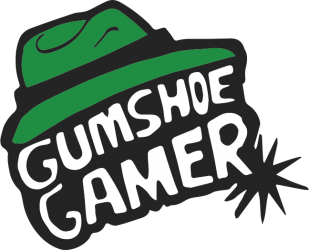Has there ever been a game that has emotionally moved you? Well everyone this here is one of those games for me. “An Aspie Life” is a wonderful indie video game made by Australian dev team EnderLost. Now some of you might recognize this game as it has won several accolades including the “2017 National iAward Senior Student” award. You also might have seen this game on steam as it was not only an early access game but free as well. It came out of early access to a full release on March 29th, 2018, and is still free! I know I am a bit late to the hype of this game but “An Aspie Life” is a wonderful game about what it’s like to live with autism. I had a chance to talk to the indie dev behind it all, Bradley Hennessey, about the game and its development.
Gumshoe: What got you into video games?
Bradley: Playing games as a kid, Open TTD, Minecraft, etc. Just liked playing games. Then in Highschool, I found ‘gamemaker‘… and have been making games ever since.
Gumshoe: So what drove you to make An Aspie Life?
Bradley: The current misinformation that is surrounding autism, and the fact I wanted to try something different and innovative
Gumshoe: Were there any challenges or difficulties when developing “An Aspie Life”?
Bradley: Yes. Firstly – Trying to turn autistic traits into gameplay mechanics was hard. It took some time to get it working correctly and make the ‘flow’ work. Secondly – Animation… I’ve never done so much animating in my life to the detail present in An Aspie Life. Took a lot of time. Finally – BUGs….. BLOODY BUGGS!
Gumshoe: Were there any ideas or scenarios cut from the game?
Bradley: Yes, a few. They were mainly cut due to time restraints. A few cutscenes were cut because there was no need for them. As the game already goes across its info. I cut a lot of Sams content. He was originally going to also have another ending if you found him again on day 2… but I realized since he was inhospitable, it won’t make any sense.
Gumshoe: What do you hope players will get out of playing “An Aspie Life”?
Bradley: I hope if anything players will get at least a better idea of what autism really is.
Gumshoe: Lastly to all the other indie devs, what advice would you give them?
Bradley: Work out your save system before anything else… Sounds small but it will save you a massive headache later on.
Talking with Bradley has really cemented the fact that video games can do what books and even movies can’t fully do, give you an interactive experience. While playing An Aspie Life, I couldn’t help but notice how well the gameplay reinforced what it is like to be living with autism. Even the little details such as making all the NPCs blacked out, how the main character writes in his diary, and a whole lot more really showcases what it is like to live with autism to some degree. I truly think this game made me understand autism more than just reading about it could ever do. That is really the power video games have. But if you have not played this game, WHY NOT?! Go play it right now! It’s free on steam!! Also, make sure to check out EnderLost Studios’ website and social media to keep updated! With all that in mind, thanks for reading…
Play the Game! It’s Free! http://store.steampowered.com/app/786410/An_Aspie_Life/
Twitter: https://twitter.com/mebradhen
EnderLost Studios Website: https://mebradhen.github.io/index.html
EnderLost Studios Facebook: https://www.facebook.com/TheAspiegame/




 Recently I was given a code for a game called “
Recently I was given a code for a game called “